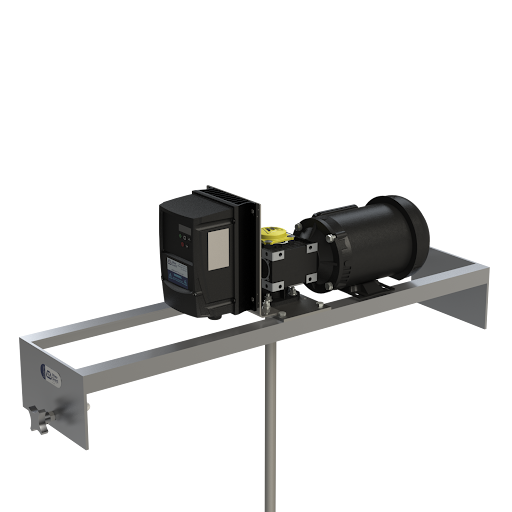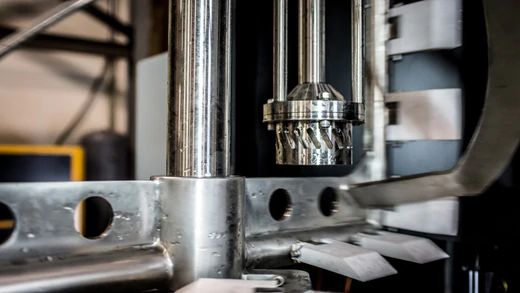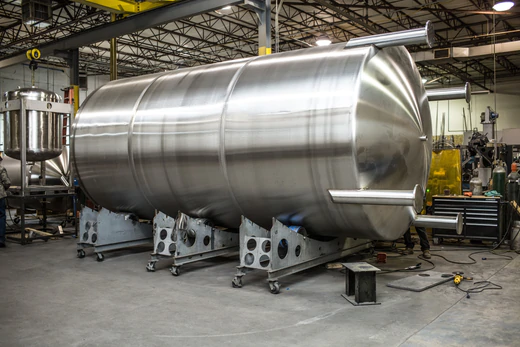Driving Productivity with Tote Agitators in Industrial Applications
Suppose your process materials are delivered and stored in intermediate bulk containers (IBCs). In that case, you've likely encountered common issues...

Access MXD Process resources including blogs, technical guides, manuals, and maintenance tips—everything you need to optimize, troubleshoot, and expand your process knowledge.
Discover who we are, the industries we serve, and the trusted brands behind our process equipment and environmental solutions. Learn how our team brings precision, innovation, and reliability to every project.
5 min read
MXD Process Dec 7, 2017 12:00:00 AM
One common issue that arises in mixing is an undesirable flow pattern. If your mixer is producing an undesirable flow pattern, you may have difficulty thoroughly mixing the solutions you add, especially if they are a combination of fluids and solids. It doesn’t matter that you have sufficient power, all your mixer can do is accelerate the fluid around and around.
Fortunately, there is an incredibly easy fix for fixing an undesirable flow pattern and improving your mixing process: installing baffles.
Baffles are long, flat plates that are typically attached to the sides of a mixing tank so that they span the height of the tank from top to bottom, though some baffle type may not span the full length or they may be attached on the bottom of the tank. Most often, baffles are required for larger process tanks that are greater than ten foot in diameter. For smaller tanks, offset mounting can sometimes provide the desired flow pattern, but baffles still provide surefire disruption to the mixing vortex. For larger tanks, though, installing baffles is much more affordable and effective. Offsetting has diminishing effects as the tank grows in diameter.
Baffles work by disrupting the flow pattern and providing top to bottom flow. When mixing solid suspensions in a large, cylindrical tank, you'll normally end up with a swirling flow pattern no matter what type of impeller you use. This flow pattern is often undesirable, though, as solid particles will tend to collect at the bottom of the tank rather than being thoroughly mixed into the solution. By ensuring that top to bottom flow is achieved in addition to swirling flow, baffles are able to prevent this from happening.
Baffles are most often installed in large, cylindrical tanks that are mixing solid suspensions. For these situations, using an offset mount will generate unbalanced loads that put pressure on the mixer shaft. To offset these loads, you would need to install a heavier-duty agitator gearbox and bearing, which can make your mixer much more expensive. Baffles, though, do not generate nearly as much of an unbalanced load as offset mounting, allowing you to disrupt the flow pattern in your large tank without having to install expensive components such as are required with offset mounting.
There are several notable instances, though, where baffles may not be required. As already mentioned, if your tank is less than ten foot in diameter then offsetting your impeller either with an offset angle mount or an offset vertical mount can sometimes achieve the desired flow pattern without installing baffles.
Likewise, if you are using a square or rectangular tank then baffles will not be required. However, these tanks are not normally used for mixing solid suspensions because there will be dead spots in the corners of the tank where particles are allowed to settle.
Lastly, for high viscosity mixing where the viscosity of your mixture is over 5,000 cps, baffles are not very effective and the flow pattern will likely be the same with our without them. In these instances, there will be enough resistance for the mixer to impose all of its torque into the mixture without the need for baffles.
With that said, though, there are still plenty of scenarios where installing baffles in your tank is the optimum solution. If you are unsure whether baffles are an appropriate solution for your specific mixing operation, feel free to reach out to us.
There are a variety of baffles to choose from depending on your specifications and intended use. These baffles include:
The most common type of baffles used are standard baffles. These baffles are mounted on the side and span the height of the tank from top to bottom.
Like standard baffles, finger baffles are mounted vertically on the side of the tank. However, they extend further towards the middle of the tank than standard baffles and they provide more space between the bottom of the tank and the bottom of the baffle.
Bottom baffles are mounted horizontally on the bottom of the tank, and they span the entire diameter of the tank.
Shortened baffles are mounted vertically on the side of the tank like standard baffles. As the name suggests, though, they are shorter than standard baffles and only extend from the bottom of the tank to about halfway up rather than extending the full height of the tank.
Each of these baffles have their own set of uses and advantages, and which one is best depends entirely on your intended use. If you are unsure of which baffle would work best in your tank, let us know your requirements and we will be happy to help you choose a baffle that is best suited for your specific mixing operation.
In addition to coming in multiple types, baffles are also available in a variety of widths. The width you should choose is dependent on the viscosity of your mixture. Outlined below are the various baffle widths as a function of T where T equals the diameter of your tank as well as the viscosity they are recommended for.
Sometimes if you are using one mixer to mix multiple mixtures, it may be difficult to pin down a single viscosity or viscosity range. In these cases, you have to come up with a compromise on your baffle width that is based on the average viscosity of the mixtures you will be mixing.
One common concern with installing baffles is keeping them clean with a Clean in Place (CIP) system. CIP systems are common in the food and beverage, biotech, and pharmaceutical industries where manual cleaning is too time-consuming and costly.
In many cases, though, baffles can be cleaned thoroughly with a CIP system if they are installed correctly. To ensure your baffles get clean, you will want to install them so that there is a gap between the baffles and the wall of your tank. It is recommended that this gap be 1/72 the diameter of your tank. This gap will allow flow to circulate around the baffle and clean it more thoroughly.
By increasing the torque output of your impeller(s), baffles will also increase the power usage of your mixer. To many, this may seem like a negative consequence.
However, in a case where swirling flow is the only flow pattern being achieved, increasing the power usage of your mixer is actually desirable. An impeller producing only swirling flow with little resistance may not be using much power, but it's also doing very little mixing. By increasing the resistance on your impeller and thus achieving top to bottom flow, baffles can drastically improve the effectiveness of your mixing. Increased power usage is a consequence, but it's a very worthwhile one.
For many mixing applications, baffles are one of the most beneficial additions you can equip your mixer with. These relatively affordable components allow you to improve the flow pattern in your mixer in a way that does not put a great deal of strain on your impeller shaft.
At Mixer Direct, we offer a wide range of high-quality baffles in order to meet every possible need and application. These baffles are built to last and function flawlessly over the entire course of their life-cycle.
Best of all, our experienced mixing engineers will be happy to discuss your specific setup and help you choose a baffle type and width that is optimized for your requirements. By working with Mixer Direct, you can take all of the guesswork out of choosing the right baffle and ensure you are setting your mixer up in the best way possible.
If you are looking for a way to improve the flow pattern in your mixer and would like to learn more about the solution that baffles provide, we invite you to contact us today.

Suppose your process materials are delivered and stored in intermediate bulk containers (IBCs). In that case, you've likely encountered common issues...

While you may be familiar with industrial mixing, high-shear mixing is a specific category in industrial mixing with its own unique functions. High...

The bottom of your tank, also ironically called the ‘head’ of the tank, may not be the first thing you think about when choosing to design a tank,...